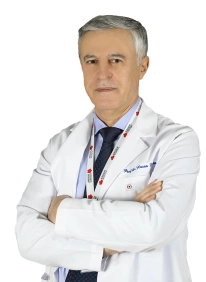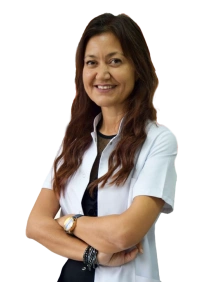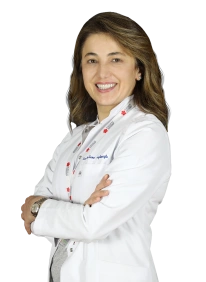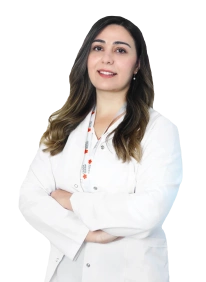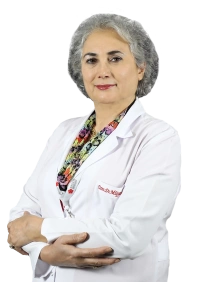Physical Medicine and Rehabilitation
Modern Methods at Physical Medicine and Rehabilitation
Physical Therapy and Rehabilitation is a medical discipline that aims to treat movement system diseases, restore deteriorated functions and make the patient fully treated. Various physical agents such as hot and cold applications, electric currents, laser, massage and exercises are used for the treatment of diseases.
PTR procedures can be examined under two main topics as "Physical Medicine" and “Rehabilitation”
A. Physiotherapy
It refers to the use of various physical agents in treatment. These procedures are divided into two groups as passive methods and active methods.
1. Passive Methods
The patient stays in a suitable and comfortable position without moving. The physical agents recommended by the physiotherapist are applied to the patient by the 'physiotherapist' or ‘physiotherapy technicians’. Physical agents used in treatment include:
- Heat (hot pack, cold pack, paraffin, swirling water),
- Light (infrared, ultraviolet, LASER),
- Electromagnetic (short wave, radar, magnetic field),
- Sound waves (therapeutic ultrasound, ESWT),
- Electricity (galvanic, faradic, sinusoidal, rectangular and interference currents, TENS etc.)
- Mechanical (manual or automated traction, vibration, massage, mobilization, manipulation, robotic applications such as CPM and lokomat)
Passive methods increase tissue blood supply, regulate cell activities, accelerate healing, and improve tissue flexibility and resistance. As a result, they:
- Relieve pain.
- Eliminate inflammation.
- Prevent tissue damage and heal damaged tissues.
- Increase the joint’s range of motion.
- Strengthen tissues such as muscle, tendon, ligament, fascia, joint capsule.
Each of these passive methods can be applied alone or in combination. However, an active method must be included in the treatment for tissue healing.
For passive methods to be effective, the diagnosis must be accurate, the procedure must be focused directly on the damaged tissue or area, the dose and duration of the procedure must be sufficient. The experience and skills of the practitioner therapist are as important as the quality and calibration of the devices. Passive procedures are applied in our hospital, under the supervision of experienced specialist doctors based on evidence, and by well-trained physiotherapists, by using quality devices.
Physical therapists can also perform various injections for treatment purposes. The application areas and methods of these injections are given below.
Injections Used in Pain Treatment
Anti-inflammatory pain treatment applications (cortisone and local anesthetic)
- Trigger point blockade (fascia-muscle-tendon diseases)
- Peripheral nerve blockade (in nerve compression syndromes)
- Nerve root blockade (in waist-neck hernias)
- Caudal epidural injection (in lumbar hernia and spinal stenosis)
Pro-inflammatory pain treatment applications
- PRP injection
- Ozone injection
- Neural therapy
- Mesotherapy
- Prolotherapy
Injection applications in rheumatic and orthopedic diseases
- Intra-articular injections (cortisone or hyaluronic acid into all joints)
- Joint puncture (discharge of swollen joints)
- Joint lavage (irrigating the joint with serum)
- Periarticular injections (to painful and inflamed tissues around the joint)
- Tendon injections
- Intralesional injections
Injection applications in neurological diseases
- Botox injections (spasticity treatment to the motor point of the muscle)
- Phenyl alcohol blockade (to peripheral nerve for spasticity treatment)
2. Active Methods
It mostly includes therapeutic exercises. These applications require the patient's personal participation. The physical therapy and rehabilitation specialist determines the purpose and targets of the exercise. The physiotherapist determines the exercise method, adjusts its intensity, and makes the necessary adjustments according to the developments. It also shows the movement to the patient, controls and follows the application.
Therapeutic exercises include the following applications;
- ROM exercises with manipulation and mobilization applications to increase the range of motion of the restricted joints.
- Stretching, strengthening (progressive resistance) and endurance exercises for the treatment of weak, shortened, spastic or injured muscles
- Stretching and strengthening exercises for the treatment of painful, injured, shortened or operated tendons and ligaments.
- Neuromuscular reeducation techniques such as PNF, Bobath exercises for the stimulation and treatment of paralyzed muscles.
- Aerobic exercises
B. Rehabilitation
It includes restoration practices in order to compensate for the loss of function caused by a disease. Rehabilitation mainly includes passive and active physical therapy applications. However, the goal of rehabilitation is different from physical therapy.
Diseases are classified according to diagnosis (biology); such as cardiovascular diseases, cerebrovascular diseases, musculoskeletal diseases. However, one of the two patients with the same diagnosis has no complaints, while the other may be very sick or bedridden. Therefore, patients are further classified according to the severity of the disease as impairment, disability, and handicap. For example, if someone with rheumatoid arthritis has swelling and pain in their joints, this is identified as impairment. If the patient cannot eat or walk due to joint damage, he is disabled. If the patient has lost his/her job due to his/her illness and has become needy, he/she is handicapped. Treatment of the impairments requires medications (medical therapy), surgery (surgical therapy), or physical agents (physical therapy).
Medical rehabilitation practices are also required for the treatment of disabled individuals. Disabled (handicapped, disadvantaged) individuals need additional psychosocial support.
In summary, 'Physical Therapy and Rehabilitation' refers to the useful and necessary treatment methods for the treatment and rehabilitation of many different diseases. Diseases for which these applications are useful and/or necessary are given below. Physical therapy and rehabilitation specialists are engaged in the diagnosis and treatment of these diseases.
1. Musculoskeletal Diseases
joint diseases
Cartilage, capsule, ligament, tendon, bursa, meniscus problems
- Non-surgical treatments
- Post-operative rehabilitation
Neck, back, waist problems
All painful conditions
Posture disorders
- Scoliosis, kyphosis, etc.
Shoulder, elbow, wrist, hand and finger joint problems
Non-surgical (non-operative) treatments
Post-operative rehabilitation
Amputee rehabilitation
Hip, knee, ankle, foot and finger problems
Non-surgical (non-operative) treatments
Post-operative rehabilitation
Amputee rehabilitation
Bone diseases
Osteoporosis
Post fracture rehabilitation
Amputee rehabilitation
2. Nervous System Diseases
Brain Strokes
- Stroke -Hemiplegia (stroke due to cerebrovascular disease or bleeding)
- Paralysis due to head trauma
- Cerebral palsy (postnatal cerebral palsy)
- Cerebral palsy due to suffocation and poisoning
Spinal Cord Paralysis
- Tetraplegia Cervical paralysis
- Paraplegia Paralysis of the back-waist level
- Cauda equina lesion - Spina bifida
Nerve or Nerve Root Lesions
- Facial paralysis
- Trap neuropathies (such as Carpal Tunnel Syndrome)
- Nerve root - nerve network compressions (neck and lower back)
- Thoracic outlet syndrome
- Arm plexus injuries at birth
- Nerve injuries at the hand, arm, leg and foot (peripheral)
Muscle diseases
- Muscle atrophy (ALS, SMA)
- Muscle rheumatism (fibromyalgia, myophysial pain)
- Muscle – tendon injuries and ruptures
Other
- Parkinson disease
- Multiple Sclerosis
- Vertigo (dizziness)
- Balance and gait disorders
- Painful muscle cramps
- Muscle tone disorders (spasticity, dystonia, hypotonia)
- Restless legs syndrome
3. Rheumatic Diseases
Inflammatory Rheumatic Diseases
- Less than 3 months
- Ankylosing spondylitis
- Other rheumatological diseases involving the joints
Degenerative Rheumatic Diseases
- Osteoarthrosis
- It can be seen in all joints, most commonly in the waist, neck and knees.
Soft Tissue Rheumatism
- Myositis - myalgia (muscle rheumatism)
- Tendinitis - Tendinosis (Muscle tendon diseases)
- Such as trigger finger, tennis elbow, achilles tendinitis
- Ligamentitis (forcing – breaking of joint ligaments)
- Cruciate and collateral ligaments of the knee, such as ankle ligaments
- Bursitis (shoulder, elbow, hip and knee bursitis)
- Facial disorders (such as Dupuytren's contracture, plantar fasciitis, heel spur)
Chronic Painful Conditions and Pain Management
- Neuralgias (pain due to nerve damage)
- Fibromyalgia syndrome
- Algoneurodystrophy - Sudeck's atrophy
4. Other Diseases
- Obesity treatment (with endocrinology, nutrition and dietetics and psychotherapy)
- Lymphedema treatment
Other procedures by our department
- Local intramuscular steroid injection
- Intra-articular steroid injection
- Intra-articular hyaluronic acid injection
- Pre- and post-operative treatment
- Prolotherapy
- Botox (TMJ diseases)
- Athlete rehabilitation
- Lymphedema
- Fibromyalgia
- Fracture rehabilitation
- Scoliosis
Physical Medicine and Rehabilitation

